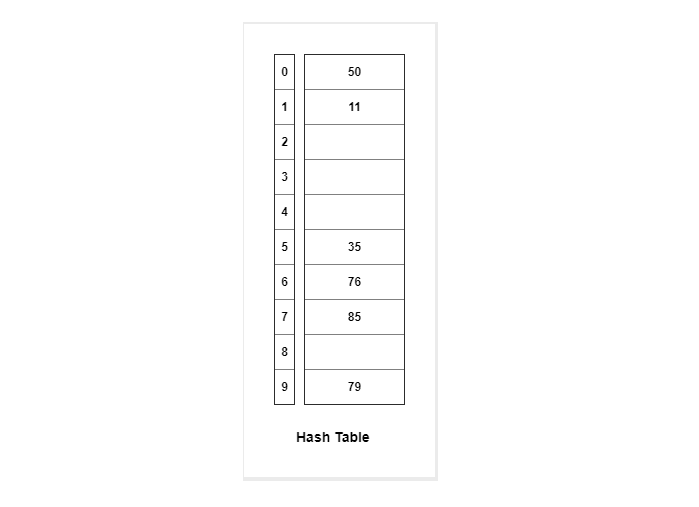
 Data Structure
Data Structure Networking
Networking RDBMS
RDBMS Operating System
Operating System Java
Java MS Excel
MS Excel iOS
iOS HTML
HTML CSS
CSS Android
Android Python
Python C Programming
C Programming C++
C++ C#
C# MongoDB
MongoDB MySQL
MySQL Javascript
Javascript PHP
PHP
- Selected Reading
- UPSC IAS Exams Notes
- Developer's Best Practices
- Questions and Answers
- Effective Resume Writing
- HR Interview Questions
- Computer Glossary
- Who is Who
Hash Functions and Hash Tables
Hashing is the process of generating a value from a text or a list of numbers using a mathematical function known as a hash function.There are many hash functions that use numeric numeric or alphanumeric keys. Different hash functions are given below:
Hash Functions
The following are some of the Hash Functions −
Division Method
This is the easiest method to create a hash function. The hash function can be described as −
h(k) = k mod n
Here, h(k) is the hash value obtained by dividing the key value k by size of hash table n using the remainder. It is best that n is a prime number as that makes sure the keys are distributed with more uniformity.
An example of the Division Method is as follows −
k=1276 n=10 h(1276) = 1276 mod 10 = 6
The hash value obtained is 6
A disadvantage of the division method id that consecutive keys map to consecutive hash values in the hash table. This leads to a poor performance.
Multiplication Method
The hash function used for the multiplication method is −
h(k) = floor( n( kA mod 1 ) )
Here, k is the key and A can be any constant value between 0 and 1. Both k and A are multiplied and their fractional part is separated. This is then multiplied with n to get the hash value.
An example of the Multiplication Method is as follows −
k=123 n=100 A=0.618033 h(123) = 100 (123 * 0.618033 mod 1) = 100 (76.018059 mod 1) = 100 (0.018059) = 1
The hash value obtained is 1
An advantage of the multiplication method is that it can work with any value of A, although some values are believed to be better than others.
Mid Square Method
The mid square method is a very good hash function. It involves squaring the value of the key and then extracting the middle r digits as the hash value. The value of r can be decided according to the size of the hash table.
An example of the Mid Square Method is as follows −
Suppose the hash table has 100 memory locations. So r=2 because two digits are required to map the key to memory location.
k = 50 k*k = 2500 h(50) = 50 The hash value obtained is 50
Hash Tables
A hash table is a data structure that maps keys to values. It uses a hash function to calculate the index for the data key and the key is stored in the index.
An example of a hash table is as follows −
The key sequence that needs to be stored in the hash table is −
35 50 11 79 76 85
The hash function h(k) used is:
h(k) = k mod 10
Using linear probing, the values are stored in the hash table as −


